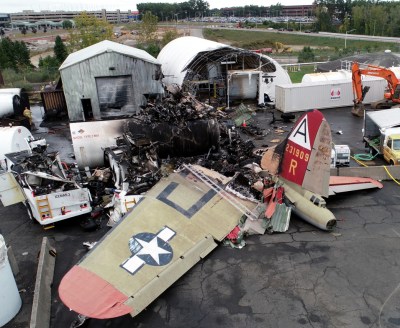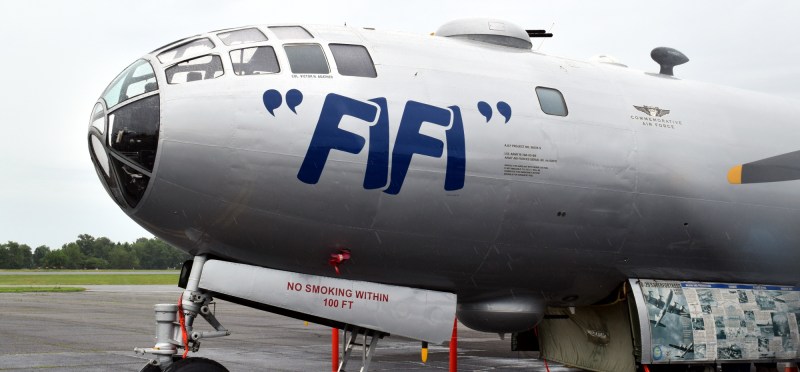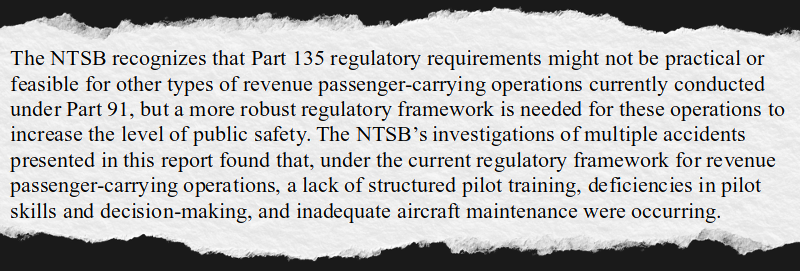
Back in September of 2019, I had the opportunity to climb aboard the restored B-17G bomber Nine-O-Nine as part of a national “Wings of Freedom” airport tour operated by the Collings Foundation. I was excited to get up close and personal with such an iconic aircraft, particularity since Hackaday gave me a platform to share the experience with a global audience. With fewer than 50 B-17s left in the world, and most of those in the United States, taking this sort of “virtual tour” was as close as most people would ever get to seeing what it was really like for the crews who operated these machines over the skies of Europe more than 75 years ago.
Tragically, just a week after the article was published, the Nine-O-Nine crashed during a visit to Bradley International Airport in Connecticut. The pilot, co-pilot, and five paying passengers were all killed in either the initial impact or the subsequent fire. When crews were finally able to extinguish the flames, the left wing and tail were all that remained of the once mighty bomber. In a twist of fate, some of the images I took for the Hackaday article ended up being included in the National Transportation Safety Board (NTSB) accident report, as they represented perhaps the most detailed photographic record of the aircraft’s condition before the crash.

In the weeks and months that followed, many voiced their concerns over what the Federal Aviation Administration (FAA) calls “Living History Flight Experience” aircraft such as those operated by the Collings Foundation. The main point of contention was whether or not these planes were too old to safely carry passengers, and by extension, whether continuing to fly them around the country presented a menace to the national airspace. Critics argued that whatever cultural benefit offered by the chance for the public to tour or ride these antique aircraft was not worth anyone losing their lives over; a line of logic that’s difficult to find fault in.
Then came COVID-19. By March of 2020, individual states had already started going into lockdown, and suddenly there were far more pressing matters to address than the fate of a few dozen teetering WWII aircraft. It was around this time that the FAA pulled the Collings Foundation’s license to conduct any more paid flights, but since outdoor gatherings such as airshows were being put on hold for the foreseeable future, the measure had little immediate impact. It was clear these airborne museum pieces were going to spend most of 2020 in their hangers anyway.
Now, thankfully, the pall of COVID-19 is finally beginning to lift over the United States. In response to widespread vaccine availability, most states are ending or at least reducing their restrictions on outdoor events. With major airshows like the “World War II Weekend” in Reading, Pennsylvania given the green light to proceed, these legendary aircraft are being awakened from their long slumber and making their first tentative flights of the post-pandemic era.
A Date With FiFi
It was a dreary rainy day when the Commemorative Air Force brought their AirPower History Tour through my local airport, but that didn’t stop people from coming out and seeing the planes on display. After all, it’s not often you get to see a B-29. Best known for dropping the atomic bombs on Hiroshima and Nagasaki, only two of these highly advanced bombers are still airworthy.
The history of this particular B-29, FiFi, is not unlike that of the Nine-O-Nine. Both were built too late in the war to see any combat, and instead were kept stateside and used as targets in various weapon research and development programs. While this might seem like an unfortunate fate to befall two brand-new military aircraft, in reality, it’s a big part of why they were still in good enough condition to be restored to flight-worthy status in the 70s and 80s. Upon returning to the US, the majority of actual combat aircraft were sent to languish in the desert before eventually being cut up for scrap metal.
Designed to fly on longer range missions than the B-17 and with more than double the bomb load, the B-29 is far larger than its early-war predecessor. While navigating through the tight passages and low overhangs of the B-17 was something of a challenge for even relatively young and spry visitors, the interior of the B-29 was cavernous by comparison. That said, visitors taking the tour of FiFi could only enter the plane’s forward bomb bay and pressurized flight deck. To reach the rear pressurized compartment, where the gunners operated the state-of-the-art analog computer that directed the bomber’s defensive machine guns, visitors would have to crawl through a narrow tunnel that runs nearly the length of the fuselage. From a liability standpoint alone, it’s clear why this area was kept off-limits.



Still, the flight deck of the B-29 offered plenty to see. The stations for the radio operator and navigator are packed with interesting pieces of vintage equipment, while the flight engineer’s seat puts you face-to-face with a literal wall of switches, gauges, levers, and dials. Even with everything forward of the pilot and co-pilot seats roped off, there was more than enough room in the forward compartment for five adults to mill around without getting uncomfortably close to one another. A volunteer from the Commemorative Air Force was in the cockpit at all times, ostensibly to answer questions, but also to keep a watchful eye out for any inquisitive finger poking.
Unfortunately a light drizzle turned into a downpour, and the crew was forced to cover up the pilot and co-pilot panels before it was my turn to climb up onto the flight deck. While this was disappointing, knowledge that the iconic “green house” nose of the B-29, which confounded Soviet engineers and inspired the design of the Millennium Falcon’s cockpit, leaks like hell in the rain should make for an interesting bit of WWII trivia to pull out in the future.
Change is in the Wind
The Commemorative Air Force is still licensed by the FAA to provide living history flights on FiFi, with prices ranging from $570 to $1,595 depending on which seat you chose for your 30 minute excursion. Even at those prices, all of the ride opportunities were booked solid during the bomber’s stay in my area. While the loss of the Nine-O-Nine might have shaken the public’s perception of these flights, it seems there’s no shortage of history buffs and thrill seekers that are still eager to climb aboard and strap in.

During the AirPower History Tour, FiFi is joined by several WWII fighters and trainers such as the P-51 Mustang, T-6 Texan, and Boeing Stearman. Depending on the location, guest aircraft such as the Consolidated B-24 bomber and TBM Avenger occasionally join the entourage. All of these aircraft are available for rides, with even the cheapest seats setting visitors back $250.
But while it may seem like business as usual for now, it’s unclear how long it will continue that way. The wheels of government might have been slowed by the COVID-19 pandemic, but they never stop. On March 23rd, the NTSB released a report urging the FAA to implement more stringent safety and maintenance requirements for historic aircraft after their investigation into the Nine-O-Nine crash showed the bomber had been badly in need of repairs for some time. While acknowledging that holding WWII aircraft to the same safety standards as their modern counterparts isn’t possible, the report argues that the FAA should establish new guidelines that are closer aligned with the expectations placed on other commercial operators.
Statements from the FAA have made it clear they have every intention of preserving living history flights by historic aircraft, but the reality is that greater oversight invariably will lead to increased costs. Keeping these planes in the air is already an extremely expensive proposition, so it’s not hard to imagine these tours being shortened in the future as a cost cutting measure.
In any event, one thing is plainly obvious: if you’ve ever wanted to take a ride in a WWII warbird, you better do it soon, since ticket prices are only going to get more expensive and opportunities more rare as time goes on.



0 Commentaires